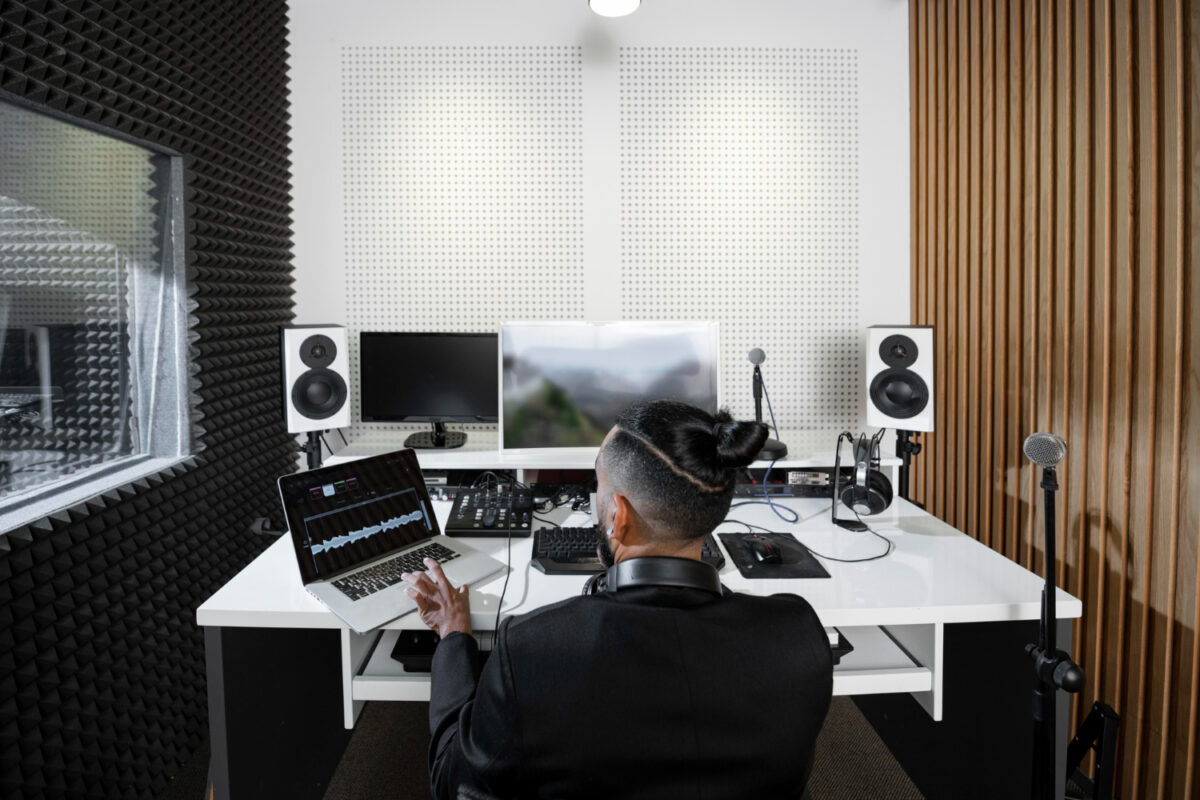
The world of sound design is a fascinating and complex one. From creating the perfect soundscape for a film to capturing the subtle nuances of everyday life, sound designers have a unique and important role in shaping our experience of the world around us.
In this blog post, we’ll explore some of the basics of sound design and how it can be used to enhance your projects. Whether you’re a budding sound designer or just looking to add a little more dimension to your work, we hope you’ll find this post useful!
What is sound design?
Sound design – what is it? In the most basic terms, it’s the manipulation of sound and the use of audio technology to bring a project to life. It’s more than using the key of Eb major and adding a low, broody bass line. Think of all those atmosphere-creating layers and effects that help tell a story or evoke emotion in a movie. That’s a sound design!
Taking sound samples from different sources to create something new, something that could never be heard in “real life”? Yup, that’s part of what sound designers do! Whether you’re watching an educational documentary or an action blockbuster, the sound design will have been at play – turning dialogue into a chaotic battle cry or taking ambiance from a peaceful afternoon and transforming it into vibrant music.
The basics of sound design
If the sound design has piqued your interest, then you have come to the right place! It all starts with understanding the basics of sound design. A sound designer is someone responsible for creating and crafting sound effects, music, and atmosphere in media formats such as film, television, video games, and other forms of sound recording.
This consists of a carefully thought-out composition of sound elements that are strategically placed to create a realistic experience that transports an audience into the intended environment. If this kind of creative sound manipulation appeals to you, consider getting started today on becoming a sound designer!
The different types of sounds you can use as a sound designer
As a sound designer, the possibilities are virtually endless when it comes to all the types of sounds that you can create!
Whether it’s an explosion, an animal chirp, or your favorite hip-hop beat, there are no limits on how inventive you can get. You might add some machine noises like robotic beeps and boops, record some natural sound effects in your backyard, or even try your hand at creating original music.
And don’t forget — if you’re looking for something truly unique, why not make use of everyday objects like bellowing a toilet plunger and banging a pot as percussive instruments?
With so many options available to craft some truly captivating audio experiences, what better way is there to express your creativity than interpreting environments and stories through sound?
How to create a soundscape
Have you ever wanted to create a soundscape? Now you can sound like an experienced sound designer! Crafting soundscapes is such a fun, creative way to explore sound. It can help express ideas, feelings, and moods in new ways. With the right tools and imagination, your soundscapes can become vibrant and dynamic works of art.
First things first – find the right sounds and perfect their order. Play around with different combinations of sound, pitch, volume, and timbre until it feels just right. Next, up – layer in ambient sound or noise to give texture, atmosphere, or drama to the overall soundscape.
Then let your ears be your guide as you get creative – add spoken word, vocalizations, Foley effects – whatever will make it interesting! The possibilities for creating unique soundscapes are truly endless!
The benefits of sound design
From attention-grabbing soundtracks to subtle ambient noises, sound design can make a huge difference in any project or event. A good soundtrack can make viewers feel like they’re right in the middle of an action-packed movie and well-executed audio events add that extra oomph to captivate an audience.
Also, it helps get people out of their heads when they need to be focusing on the task at hand. It can create a safe space for open conversations or serious collaboration. Sound design is the secret weapon for creating immersive experiences, no matter what kind of project you’re working on!
Tips to excel as a sound designer
A sound designer needs an ear for quality sound, making it one of the most creative and enjoyable jobs in audio production. But there’s more (much more!) to be a successful sound designer than just having an ear for great acoustics.
Showing strong leadership skills and being able to seamlessly transition between tasks is important. Keeping up with industry trends and new technologies ensures a knowledge base that remains both competitive and relevant. It also requires the ability to take risks and think in an innovative way – so don’t be afraid to try something new, even if it goes against the grain!
Finally, having excellent interpersonal skills and strengthening project management aspects of managing tasks can go a long way toward achieving sound design success. So remember—it takes much more than sharp ears to become a great sound designer!
Conclusion
Sound design is an important and undervalued aspect of the film, video games, and other forms of media. By understanding the basics of sound design, you can create a more immersive and engaging experience for your audience. Remember that there are three main types of sounds you can use, each one with its unique benefits and drawbacks. So, it’s important to choose the right one for your project.
In addition to creating a more believable world, sound design can also be used to cue emotional reactions in your audience. With these tips in mind, you’re well on your way to becoming a master sound designer!
Get in touch with us
Related Posts

Location-Based Sound Recording: 6 Expert Tips for Noise Reduction

Secrets of the Sound Booth: 5 Tips to Achieve Professional-Quality Voice-Over Recordings
About Us
Lorem ipsum dolor sit amet, consectetur adipiscing elit. Phasellus pharetra pretium leo, sed lacinia nulla. Quisque iaculis, lectus sed eleifend vehicula, mi elit facilisis purus, vitae ornare magna elit non quam.
Get in touch with us
Let’s Socialize
Get in touch with us

